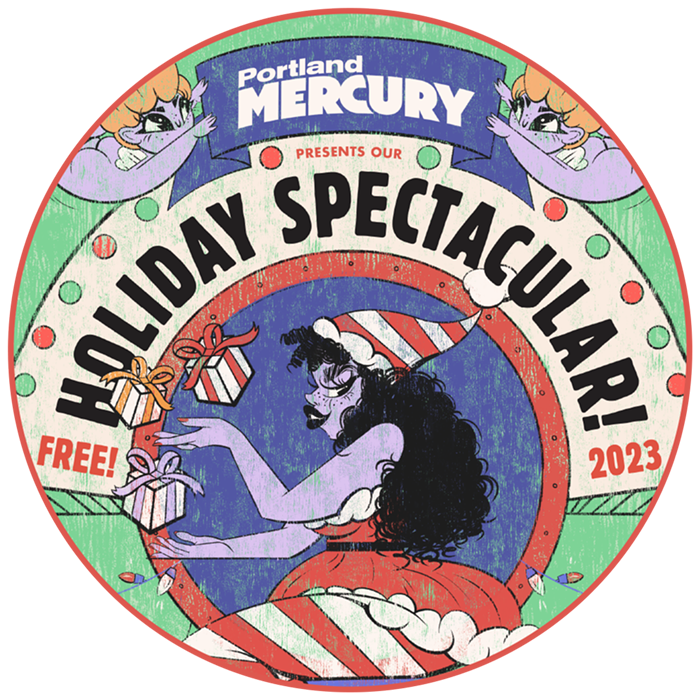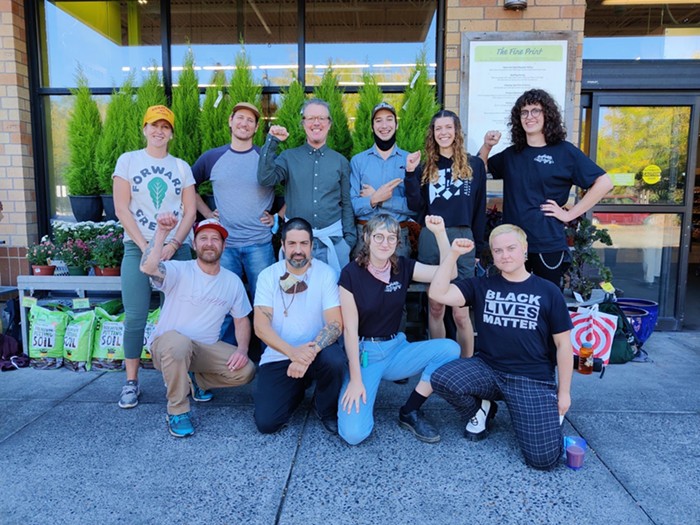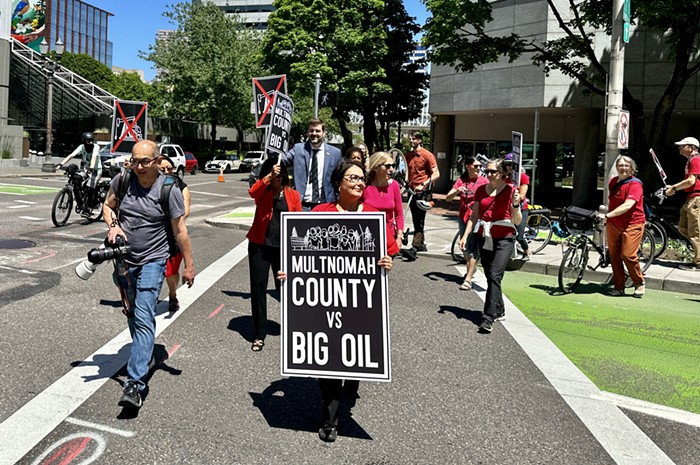LOOK, IT'S NOT EASY to distinguish yourself from a crowd, but some tactics work every time. Here's a short list, inadvertently demonstrated by this month's viz-art exhibitions:
Go for flashy patterns. Abigail McNamara has rendered maps of suburban sprawl and Matrix-style rows of binary code (ones and zeroes) in glittery gold-leaf on paper and the walls of Duplex (219 NW Couch) as a vague-yet-timely comment on three types of sprawl: natural, man-made, and virtual.
Make everyone wonder if you're kidding. Is animator Roger Kukes kidding with Theater of the Land at Augen (716 NW Davis), featuring cartoonish paintings of cowboys, Indians, oil wells, and nuclear plants in a sort of 2.5-D landscape suggestive of game worlds? All he'll confess to is a fascination with the American West.
Have a dramatic backstory. Once you get past the Jurassically mossy landscapes in Gabriel Liston's RACC-supported series of paintings at Froelick (714 NW Davis), you learn that they depict ruthless old-timey miner/developer Lafe Pence's environmental impact on Northwest Portland.
Survive in the wild. Corey Arnold's Wildlife at Charles Hartman (134 NW 8th) is photographic proof that the Alaska fisherman has stared into the steely eyes of eagles, sharks, and even octopi while braving brutally cold waters. Call him Ishmael.
Represent. (Or... hype someone else who's representin'?) At Blue Sky Gallery (122 NW 8th), as usual, photojournalists strike an uncomfortable balance between cultural awareness and exploitation. Adriana Lopez Sanfeliu's Life on the Block shows the resilient toughness of the women of Spanish Harlem, while Jared Soares' Small Town Hip-Hop captures a struggling micro-music scene in Roanoke, Virginia.
Let loose. Compared to the usual fare at Nine Gallery (inside Blue Sky), Julia Stoops' Eleven Comets explodes with vibrancy and, well, atmosphere. All four walls are drenched in color, punctuated by little paint-splatter-splosions, large CAD line drawings of cones and ovoids, and dashes of color that follow each other in swaying waves like schools of fish.
Draw "super good." Eatcho and Robert Amador are the kind of artists who were probably praised in school by other kids for being "super-good drawers." The proof? A fanciful, random stream of images, all excellently articulated but thematically only semi-serious, at their shared show, Strangers, at Upper Playground (23 NW 5th). In the flood of trippy pictures, Eatcho fixates on ancient icons, animals, and cosmic events, while Amador deconstructs anatomy and puts odds on a unicorn-rhino fight.
Trust no one. Paranoiacs hold a special intrigue, because maybe they know something you don't. Andrew Scully and Karissa Sakumoto hold down the fort at Floating World Comics (400 NW Couch) against nuclear apocalypse and popular cartoons. Scully's inked panels from the comic book Inhuman Condition show the birth of a mutated baby in a post-nuclear hellscape, while Sakumoto's zine Scorpion Jelly diagnoses cartoon characters' mental health problems. Mickey = fear, Bugs = anxiety, Donald = rage. Good looking out, guys.













